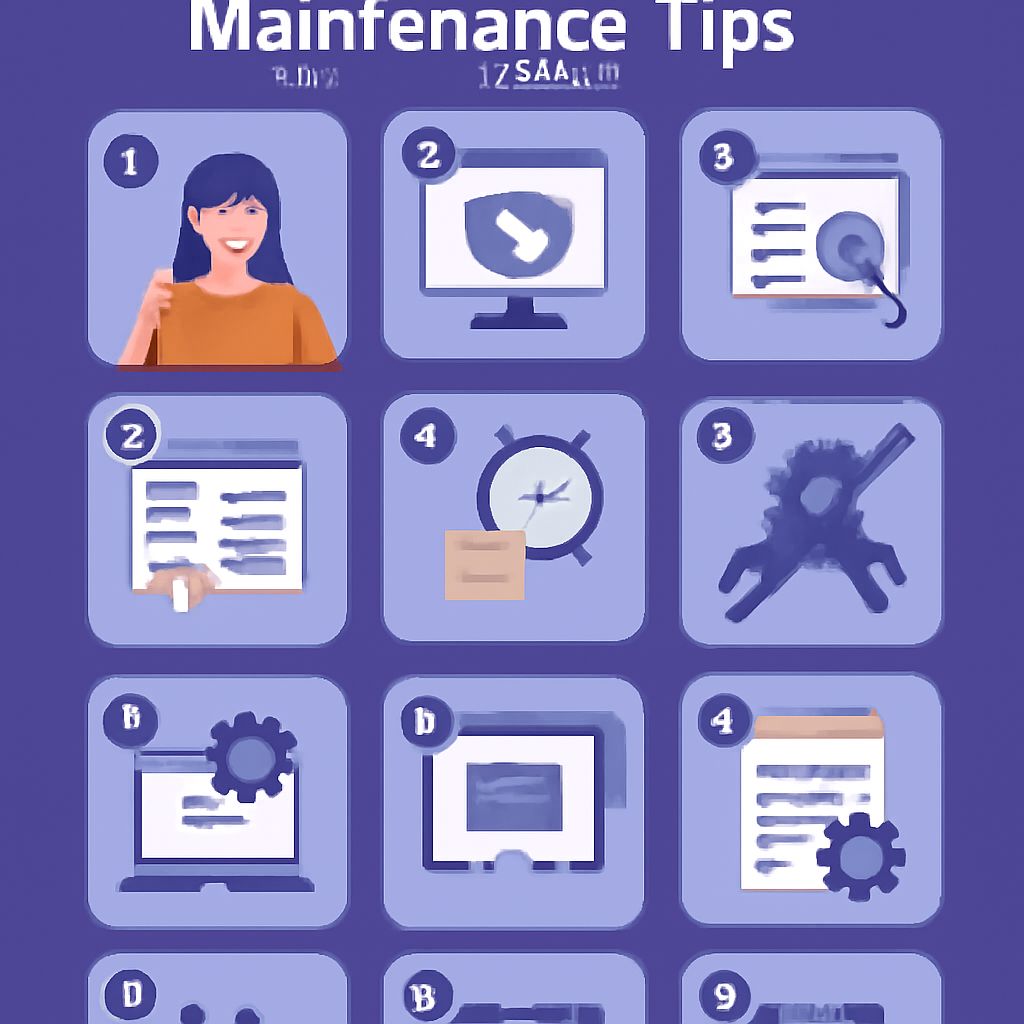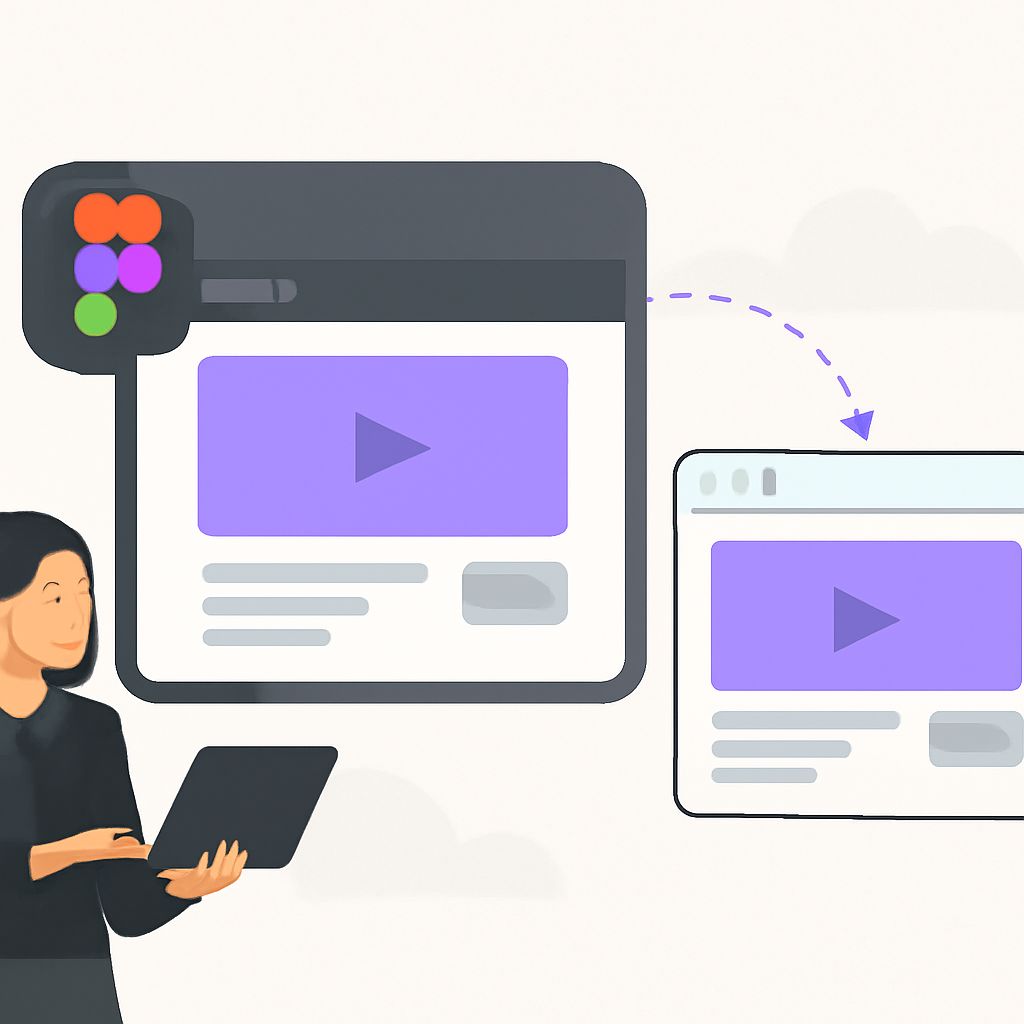10 Essential Website Maintenance Tips for Designers in 2025
Discover 10 essential website maintenance tips for designers in 2025 to keep your sites running smoothly and effectively.

Table of Contents
Introduction
In the ever-evolving world of web design, maintaining a website is a critical task that goes beyond just creating stunning visuals. Designers must ensure that their websites are not only aesthetically pleasing but also functional, secure, and up-to-date. As we step into 2025, the landscape of web design continues to change with new technologies, user expectations, and security threats. This article will explore ten essential website maintenance tips that every designer should consider to keep their sites running smoothly.
1. Regularly Update Content
Content is king, and keeping it fresh is vital for engaging visitors and improving SEO. Regular updates to blog posts, service pages, and portfolio pieces will help maintain relevance and attract new visitors.
Tips for Updating Content:
- Schedule a content audit every quarter.
- Replace outdated information with current trends.
- Add new projects to your portfolio to showcase your latest work.
2. Optimize for Performance
Website performance has a direct impact on user experience and search engine rankings. Designers should routinely check the loading speed of their websites and optimize them accordingly.
Performance Optimization Techniques:
- Compress images to reduce file size without compromising quality.
- Minimize HTTP requests by combining CSS and JavaScript files.
- Utilize content delivery networks (CDNs) to distribute load times effectively.
3. Ensure Mobile Responsiveness
With an increasing number of users accessing websites on mobile devices, it’s essential for designers to verify that their creations are mobile-friendly. Responsive design ensures a seamless experience across various screen sizes.
Testing for Responsiveness:
- Use tools like Google’s Mobile-Friendly Test to evaluate compatibility.
- Check how the site performs on different devices and browsers.
- Make adjustments based on user feedback and analytics.
4. Implement a Regular Backup Schedule
Website backups are crucial for protecting content and data from unexpected issues such as server failures or hacking attempts. Designers should establish a regular backup schedule to ensure that they can restore their site quickly if needed.
Backup Best Practices:
- Use automated backup solutions to simplify the process.
- Store backups in multiple locations, including cloud storage.
- Test your backup restoration process periodically.
5. Optimize SEO Regularly
Search engine optimization (SEO) is an ongoing process that requires constant attention. Regularly optimizing your site helps improve visibility and attract organic traffic.
Effective SEO Strategies:
- Conduct keyword research to stay updated with trends.
- Ensure metadata, including title tags and descriptions, are optimized.
- Utilize tools like Google Analytics for performance tracking.
6. Conduct Security Audits
With cyber threats becoming more sophisticated, security is a top priority for any website. Regular security audits help identify vulnerabilities and ensure your site is secure from potential attacks.
Security Measures:
- Keep software, plugins, and themes updated to the latest versions.
- Implement SSL certificates for secure data transfer.
- Use strong, unique passwords for all accounts.
7. Monitor Website Analytics
Understanding how users interact with your website is crucial for making informed improvements. Regularly reviewing website analytics helps identify trends, popular content, and areas needing enhancement.
Key Metrics to Monitor:
| Metric | Importance |
|---|---|
| Bounce Rate | Indicates how quickly users leave your site. |
| Page Views | Helps assess the popularity of content. |
| Conversion Rate | Shows how well the site achieves its goals. |
8. Test All Links and Forms
Broken links and malfunctioning forms can frustrate users and harm your site’s credibility. Regularly test all links and forms to ensure they are functioning properly.
Link and Form Testing Tips:
- Use tools like Screaming Frog or Google Search Console to find broken links.
- Regularly test form submissions to ensure they route correctly.
- Monitor redirects to ensure they lead to the intended pages.
9. Enhance User Experience
User experience (UX) is paramount to retaining visitors and encouraging repeat traffic. Designers should evaluate their website’s UX regularly to identify and address any issues.
Improving UX:
- Conduct user testing sessions to gather feedback.
- Simplify navigation to make it easier for users to find information.
- Implement accessibility features to reach a broader audience.
10. Stay Informed About Design Trends
The web design industry is continually changing, with new trends and technologies emerging all the time. Staying informed about the latest developments is essential for keeping a website modern and engaging.
Ways to Stay Updated:
- Follow industry blogs and websites.
- Participate in web design forums and communities.
- Attend webinars and conferences to learn from experts.
Conclusion
Maintaining a website in 2025 requires a proactive approach to ensure optimal performance, security, and user experience. By implementing these ten essential website maintenance tips, designers can keep their sites relevant, functional, and appealing to visitors. Regular attention to these areas will not only enhance the effectiveness of their web designs but also foster long-term success in the competitive digital landscape.
FAQ
What are the key website maintenance tips for designers in 2025?
Key website maintenance tips for designers in 2025 include regular updates of software and plugins, optimizing website speed, ensuring mobile compatibility, backing up data regularly, monitoring website security, and conducting SEO audits.
Why is website speed important for designers?
Website speed is crucial for user experience and SEO rankings. A fast-loading website reduces bounce rates and improves overall engagement, which is essential for retaining visitors.
How often should I update my website’s content?
It is recommended to update website content at least once a month to keep it fresh and relevant, which can help improve search engine rankings and engage returning visitors.
What are the benefits of regular website backups?
Regular website backups ensure that your data is safe and can be restored quickly in case of technical issues, data loss, or security breaches, minimizing downtime and impact on your business.
How can I improve my website’s security?
Improving website security can be achieved by using strong passwords, implementing SSL certificates, keeping software up to date, and using security plugins to monitor threats.
What tools can assist with website maintenance?
Tools such as Google Analytics for performance tracking, WordPress plugins for updates, and website monitoring services can assist designers in maintaining their websites effectively.








